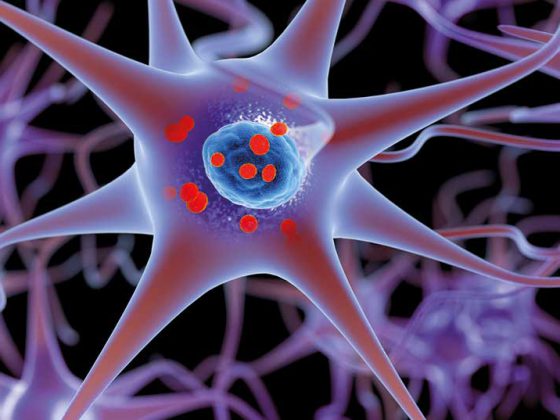A 68-year-old patient with type 2 diabetes mellitus is undergoing cardiac rehabilitation after a myocardial infarction. Despite antidiabetic treatment, his HbA1c value is deteriorating and his weight is steadily increasing. However, with the availability of new antidiabetic drugs, it is possible to counteract this trend.
Background
A 68-year-old patient comes in for a consultation due to diabetes, which was diagnosed at age 64 during a hospitalization for a previous heart attack. At the time of hospitalization, the patient weighed 84 kg with a height of 176 cm (BMI: 27.1 kg/m ). His HbA1c was 8.1% and his cardiovascular risk factors were: previous smoking (42 APU, quit 8 years ago), hypertension treated with irbesartan plus hydrochlorothiazide (HCT Zentiva®, 150 mg/12.5 mg/d), untreated dyslipidemia, and newly diagnosed type 2 diabetes. The patient benefits from stent placement via the VIA.
The patient was discharged from the hospital with treatment of his diabetes with metformin (2×500 mg/d increased to 2×1000 mg thereafter) and insulin Lantus (26 U/d in the morning). He received atorvastatin (20 mg/d) to treat his dyslipidemia and metoprolol (50 mg/d) and irbesartan plus hydrochlorothiazide (HCT Zentiva®, 150 mg/12.5 mg/d) for hypertension.
The patient undergoes cardiac rehabilitation after the infarction and begins physical activity with daily walking for one hour per day. HbA1c improves to 7.2% by 2014. Despite this moderate physical activity, diabetes control gradually deteriorates, and by the end of 2015, HbA1c is 8.2%. Insulin Lantus will be gradually increased from 26 U to 52 U/d in 2016 and 2017.
Anamnesis and diagnosis
In July 2017, the patient comes for consultation because his diabetes control has worsened (HbA1c at 8.9%) and his weight has increased to 92 kg (BMI: 30.6 kg/m2 ), which meets the definition of obesity, whereas previously he was merely overweight. Medical history shows a diet of 3 meals per day with plenty of bread, cheese, cold cuts, sometimes pastries, and half a bottle of wine per day. On physical examination, blood pressure is 142/82 mmHg and heart rate is 74/min. Cardiac and pulmonary auscultation are unremarkable, with peripheral lower extremity arteries all palpable. A palesthesia at 8/8 at the base of the great toes is noted.
In the laboratory, GFR is 66 ml/ min, albuminuria is 300 mg/24 h, LDL cholesterol is 2.8 mmo/l, HDL chole
Therapy
The question arises as to what the treatment priorities would have been. I prioritized treating the diabetes and then the LDL cholesterol.
And what antidiabetic treatment would be indicated?
Initially, treatment with a gliflozin should be started, the patient’s diet should be adjusted, and insulin should be gradually reduced.
In fact, the diet MUST be adjusted by removing (or in any case significantly reducing) pastries, cheese, bread if possible, and wine. This adjustment should result in a calorie reduction of at least 400 calories/day, i.e. a weight loss of more than one kilo per month. In addition, gliflozin prescription is strongly recommended in the context of secondary cardiovascular prevention, reduction of GFR and VG ejection fraction. In addition, this should be accompanied by a daily caloric loss of about 250-300 kcal in this patient.
Accordingly, the treatment of diabetes is adjusted to a combination of canagliflozin/metformin (50 mg/1000 mg 2x/d) and insulin Lantus (30 U/d, morning). Hypertension treatment remains unchanged (metoprolol 50 mg/d and irbesartan plus hydrochlorothiazide (HCT Zentiva®) 150 mg/12. 5 mg/d), while dyslipidemia treatment is adjusted by adding ezetimibe (10 mg) to atorvastatin (40 mg/d).
Present situation
The patient returned at the end of 2017 with a weight of 88 kg, blood pressure of 132/78 mmHg, GFR of 64 ml/min with albuminuria at 225 mg/24h, HbA1c of 7.8%, and LDL cholesterol of 1.6 mmol/l. We therefore continue the same treatment. During 2018, we observed a slow improvement in HbA1c to 7.4% and weight to 87 kg. GFR remained at 64 ml/min and albuminuria decreased to 126 mg/24 h.
How should one continue therapy management?
It would have been possible to continue treatment as is and monitor progress. However, the weight loss became more moderate, so it was decided to modify the treatment. After a positive request to his insurance company for use of a GLP-1 receptor agonist, treatment with semaglutide was started in early 2019, resulting in excellent glycemic control (HbA1c at 6.8% in January 2020) and weight loss (82 kg). Insulin was stopped in January 2020. GFR is still 63 ml/min and albuminuria is 62 mg/24h. LDL cholesterol is 1.4 mmol/l and blood pressure is 128/76 mmHg. A follow-up ultrasound showed a slightly improved left ventricular ejection fraction of 50%.
|
| Do you also have an interesting diabetes case?
Then join us and submit a patient case! Our editorial team looks forward to receiving your e-mail at diabetescases@medizinonline.ch |












